NATO frigates in the struggle for survival
The first place in terms of compliance with the combat mission in the likely conditions of use in large-scale wars goes to the German Sachsen. The second with a small margin - the Spanish Alvaro de Bazan. In third place - the Norwegian Fridtjof Nansen, and the last - the Turkish type G.
The comparison of two or three warships from different countries is very significant. However, it is much more interesting to compare compliance with the combat mission of samples of one class belonging to different schools of military shipbuilding. This will allow to correlate the approaches adopted in different countries, to identify weaknesses and strengths. It becomes possible rating of ships of the same class.
However, in order for the evaluation to be correct, the comparison must meet certain requirements. First, different ships, even significantly different in armament and purpose, are evaluated using the same methodology. The second requirement arising from the first is a unified system of quality criteria. The bottom line is that the ships being compared should be judged by the same performance indicators. The third most important requirement is unified conditions, against which and against which combat capabilities are compared. Two options are acceptable here. The first involves the selection of conditions that exactly correspond to those for which this type or sample was conceived and created. The second option involves the selection of common conditions in which the combat capabilities of all ships are determined, regardless of their original mission. In this case, the account of features is carried out by selecting weighting coefficients for the significance of tactical tasks.
Obviously, the second option is more suitable for comparing the capabilities of ships of different countries, as it allows to take into account not only the mission of the ship, but also the objective circumstances in which it will act in a real situation. Accordingly, the selected conditions must, on the one hand, reflect real combat missions that these ships will have to solve, and on the other hand, they must not go beyond the limits of applicability of ships of this class.
The most representative
To analyze the features of the world's shipbuilding schools, it is interesting to choose the most representative class. It is desirable that analogs be present during fleets most countries in the world.
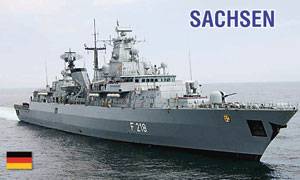 According to this indicator, cruisers, destroyers and aircraft carriers do not pass - few have such ships, even fewer those who build them. The largest of the most common ship classes in the world are frigates. They are composed of almost all countries of the world that have more or less developed naval forces. The same class, being the largest of the most widespread, integrates the highest achievements of the respective shipbuilding schools.
According to this indicator, cruisers, destroyers and aircraft carriers do not pass - few have such ships, even fewer those who build them. The largest of the most common ship classes in the world are frigates. They are composed of almost all countries of the world that have more or less developed naval forces. The same class, being the largest of the most widespread, integrates the highest achievements of the respective shipbuilding schools.Currently, there are more than three dozen modern types of frigates built in different countries in the world. Naturally, in one article it is impossible to analyze everything. Therefore, the analysis will be conducted on large regions - Western Europe (more precisely, NATO), South America, Southeast Asia.
Let's start with the most interesting and important NATO region for Russia. Alliance countries have 12 projects of modern frigates. Of these, it is advisable to choose the most representative from the point of view of shipbuilding schools and interesting as potential opponents. For these reasons, the Norwegian frigate Fridtjof Nansen, the German Sachsen, the Spanish Alvaro de Bazan and the Turkish G type were taken for analysis.
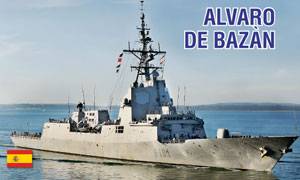 The fleet of Norway actually occupies the position of the forward echelon of NATO naval forces on the northern flank, confronting the Russian Federation Council. Accordingly, the frigates of this country are one of the most active opponents to our ships in the operational-important area, first of all at the North Cape-Medvezhy line.
The fleet of Norway actually occupies the position of the forward echelon of NATO naval forces on the northern flank, confronting the Russian Federation Council. Accordingly, the frigates of this country are one of the most active opponents to our ships in the operational-important area, first of all at the North Cape-Medvezhy line.The frigates of Germany are the most important component of the NATO naval base in the Baltic Sea area, and from this point of view the analysis of their combat capabilities is very interesting.
Spanish frigates are engaged in operations as part of the forces of the zone PLO in the Atlantic in the Iberian region of this system. In addition, according to experts, they are considered among the most successful among NATO ships in their class.
The selected Turkish sample for analysis represents the world's largest series of American frigates of the Oliver Perry type, transferred to Turkey and upgraded in accordance with the requirements of the country's naval command. It is clear that its fleet is the main opponent of the Russian Black Sea Fleet in the Black Sea and in the north-eastern part of the Mediterranean.
In order to compare the results with the previous analysis of the Russian frigate of the 22350 project and the NATO Horizon, we will use the same methodology.
Compare the characteristics
The frigate Fridtjof Nansen has a decent displacement for this class of ships - 5290 tons (full) with a small capacity of the power plant, which limits its maximum speed 26 knots. This can create certain problems when operating as part of large impact connections.
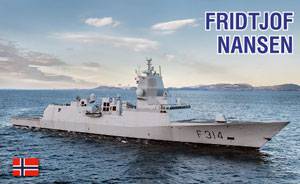 Obviously, it was created primarily to combat submarines. Its strike armament is represented by eight NSM NSMs with a range of up to 180 kilometers and a relatively small warhead. The basis of the ship's air defense system is represented by the eight-cell UVK Mk-41 with the latest American 32 SAM RIM-162 ESSM with a range of up to 50 kilometers. In addition, for the purpose of defense can be used 76-mm AU Super Rapid.
Obviously, it was created primarily to combat submarines. Its strike armament is represented by eight NSM NSMs with a range of up to 180 kilometers and a relatively small warhead. The basis of the ship's air defense system is represented by the eight-cell UVK Mk-41 with the latest American 32 SAM RIM-162 ESSM with a range of up to 50 kilometers. In addition, for the purpose of defense can be used 76-mm AU Super Rapid.Airspace control and the use of air defense systems is provided by the American radar with SPY-1F HEADLIGHT with Iegis BIUS, which form a closed loop.
To destroy submarines, the frigate has four 324-mm caliber TA for small-sized American-made torpedoes. Aviation armament represented by anti-submarine helicopter NH-90. Hydroacoustic weapons - American-made HAK with a hinged antenna.
The analysis shows that the frigate has quite good capabilities for solving air defense tasks, including as a escort ship in the interests of the entire warrant. However, the rocket ammunition weapons does not allow to repel multiple impacts of the IOS.
"Norwegian" is well armed with the search for submarines. But his anti-submarine weaponry is not enough. Opportunities to combat surface ships are limited - the subsonic missile has a good range of fire, but its combat unit is weak to disarm large surface ships or even "classmates" with one hit.
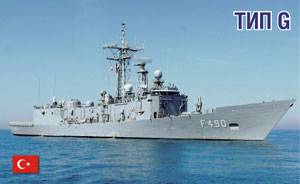 Thus, Fridtjof Nansen can be considered as a predominantly anti-submarine ship capable of independently solving tasks in the protection zone by fighter aircraft.
Thus, Fridtjof Nansen can be considered as a predominantly anti-submarine ship capable of independently solving tasks in the protection zone by fighter aircraft.The German Sachsen has a displacement larger than the Norwegian classmate: a full 5690 ton. The total power of the power plant is somewhat larger than that of the “Norwegian” (near 52 000 hp), which provides it with the maximum speed of 30 nodes. This allows you to freely operate in the composition of large ship strike connections.
The strike armament is represented by eight Garpun anti-ship missiles, the latest modifications of which have a range of about 280 kilometers (although the most common versions are within 150 – 180 km). The presence of the “Harpoon” AGM-84E in the armament of the KR allows the frigate to strike at ground targets at a distance of 150 kilometers.
The main air defense system is the 32-cell TLU Mk 41 Mod 10 (in the typical loading variant it has 24 rocket Standard SM-2 Block IIIA and 32 Evolved Sea Sparrow) and 2XXNNXX launchers Mk 21 SURK RAM (RIM-49RNMX RAM launchers (RIM-116RNXX SAM missile launchers). The ship’s artillery is represented by one 76-mm AU OTO Melara Mk75 and two 27-mm AU AG-Mauser MLG27. To destroy submarines, the frigate has two three-tube TA caliber 324 mm for small-sized torpedoes. Airspace control, target designation of air defense systems and air defense missile guidance are carried out by advanced electronic weapons, including radar with AFAR, and highly effective CICS. To search for submarines, there is a French-made STN Atlas DSQS-24B SCS with a hook antenna. Data on the presence of GUS with flexible extended antennas is currently not available. Aviation armament is represented by two helicopters.
The analysis shows that Sachsen has significantly greater air defense capabilities compared to the Norwegian classmate. Much higher and its ability to defeat surface targets due to the firing range of the missile "Harpoon" and more powerful (almost twice) its combat unit. A very important advantage of this frigate is the possibility of attacking ground targets at relatively large distances. Thus, it is a fairly versatile ship capable of solving a wide range of tasks.
The Spanish Alvaro de Bazan, according to most experts, is one of the most successful NATO frigates. It was optimized for action as part of a search and strike group led by an aircraft carrier.
With a total displacement of about 5800 tons, its power plant is less powerful than that of the “German”: about 47 000 horsepower. As a result, the maximum speed is about 28 nodes, which is quite enough for the actions in the composition of the APUG at the search speeds. Shock armament is similar to what a German frigate has - eight “Harpoon” missiles in two four-container Mk 141 launchers, as well as anti-submarine - two three-tube 324-mm torpedo tubes. In addition, the frigate has two RBUs ABCAS / SSTS.
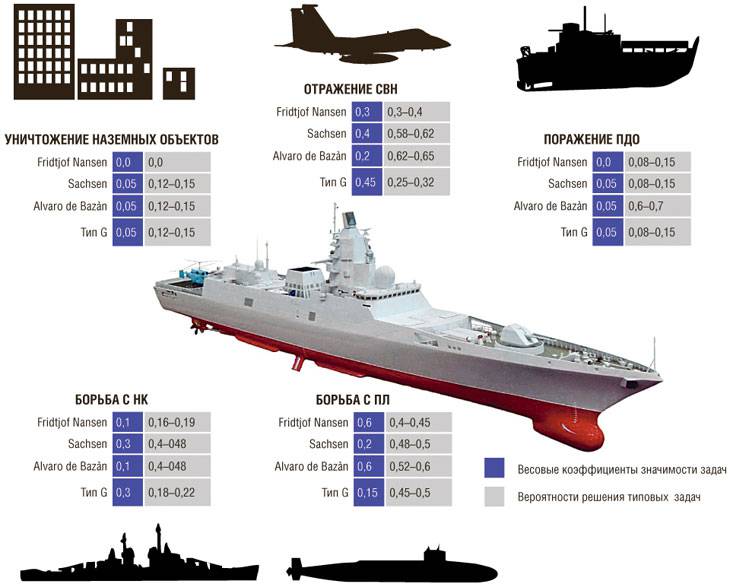
The main means of air defense - missiles, located in the TLU of the McNUMX with 41 cells. Typical charging includes X-NUMX SM-SM-48MR Block IIIA (range over 32 km) and 2 ESSM (100 km, four per cell). For the self-defense of the ship there is one 64-barrel 50-mm AU Meroka and two 12-mm AU "Oerlikon". Artillery armament is represented by the American 20-mm universal AU Mk20. The ship’s armament is controlled using the Aegis BIUS. For the control of the air situation, target designation of air defense systems and missile defense guidance, advanced radar armament was installed, including the SPY-127D radar with AFAR. There is a helicopter SH-45B. To search for submarines, the frigate uses the GAS ENOSA / Raytheon1LF with a hook antenna.
Comparison with the German "classmate" indicates that the capabilities of the weapons system are very close. Advantageous difference between the Spaniard - 127-mm AU, which makes it possible to use it to support the actions of troops in the coastal zone, as well as to deliver artillery strikes on surface targets. However, the frigate class ships are unlikely to have to solve such tasks. But the lack of GUS with extended antennas reduces the ability to search for submarines, especially in the deep-water Iberian zone of the Atlantic. This is very strange, if we proceed from the main purpose - the search for submarines in the designated area as part of the APG.
Turkish G-type frigates, as already noted, are actually American “Oliver H. Perry”, whose giant series (71 unit) was built in 70 – 80-s. In the United States, after a series of failures using this ship, the frigate class was abandoned altogether, since with such a displacement, as they believe, it is impossible to create a sufficiently powerful and well-protected ship for operations in remote areas. The remaining US frigates handed over to their allies, particularly Turkey, where they were modernized and were classified as type G.
Today, these frigates have a total displacement of 4200 tons. The power plant provides the speed of 30 nodes. The basis of the ship’s anti-aircraft and strike armament is the one-frame Mk13 launcher with 40 missile ammunition - eight Harpoon anti-aircraft missiles and 32 anti-aircraft SM-1MR medium-range missiles (with a range of up to 75 km). The minimum interval of a descent of rockets from this PU - eight seconds. In addition, there is an eight-cell Ukp Mk41 with 32 ammunition, self-defense missiles RIM-162 ESSM.
To combat the air defense system in the zone of self-defense of the ship there is ZAK "Vulkan-Falanx" with a six-barreled 20-mm AU. Artillery includes one AU OTO Melara caliber 76 millimeters. Anti-submarine armament is standard for American and other NATO ships: two three-tube TA caliber 324 millimeters and an S-70 "Sea Hawk" anti-submarine helicopter.
The control of air defense systems and other weapons of the ship is carried out by BIUS GENESIS, a highly efficient, fully automatic system capable of tracking and identifying up to a thousand targets simultaneously using Dutch-made SMART-S radar, which detects air targets at distances up to 250 kilometers. On the ship installed GUS, which has only the antenna to the neckline.
The analysis of the frigate’s armament makes it possible to conclude that its strike capabilities must be very limited due to the large scope of the anti-ship missile rocket - it will take more than a minute to release all eight missiles. The enemy will not be difficult to "grind" such a volley. For the same reason, the ship’s capabilities in collective air defense with medium-range missiles should also be recognized as limited. In self-defense, a frigate can repel attacks of modern air attack systems. However, ammunition does not allow to do this for a long time. The capabilities of the Turkish ship to search for and destroy submarines are roughly comparable to its German and Spanish "classmates."
On the sea, in the sky, on the ground
Let us evaluate the capabilities of the frigates in the likely conditions of combat use, taking into account the particular purpose of these ships. Here, as before, it is worth considering two options: actions in a local conflict against a weak naval enemy in the interests of the air force and air forces, participation in a large-scale war.
In these confrontations, the ships will have to solve problems according to which we will compare them: the destruction of groups of surface ships (KUG, KPUG) and submarines, the reflection of the EAS, striking attacks on ground targets of the enemy.
In a local war, if frigates are involved in operations as part of the NATO OVMS grouping against a weak naval enemy, the weights of the significance of the tasks for almost all the ships in question can be assessed equally: destruction of groups of surface ships and boats - 0,3, submarines - 0,15, EAS reflection - 0,4, striking enemy ground targets in the operational depth - 0,1, and anti-landing defense targets - 0,05.
In a large-scale war, ships will solve significantly different tasks and, accordingly, weights are different. Derived taking into account the characteristics of combat mission, they are presented in the diagram.
Now we estimate the capabilities of the frigates in solving typical tasks. At the same time, in order to correctly compare the results with the previously reviewed Russian frigate of the 22350 project and the French Horizon, the conditions and targets of destruction should be adopted the same (“MIC”, No. 25, 2016).
The first of the typical combat missions is to destroy groups of surface ships and boats. As previously indicated, a probable and feasible task for frigates will be strikes against groups of ships of equal class or lower. These can mainly be search and strike groups of anti-submarine ships (KPUG), conducting search and destruction of submarines in the designated area or at the turn, or shock groups of MRKs (corvettes) and missile boats. Therefore, as an example for comparison, we will consider a typical GCP (cortex of corvettes) consisting of three to four units.
Equipped with the Garpun anti-ship missiles, the German, Spanish and Turkish frigates with the most long-range modifications of the Garpun rocket can, all other things being equal, go to the designated position and execute firing without entering the enemy’s firing area and deliver an eight-rocket salvo to it. At the same time, the efficiency of the Turkish type G frigate will be significantly lower than that of the German and Spanish "classmates", due to the large scale of the volley.
Fridtjof Nansen, having a missile system with a firing range almost equal to that which the strike object has (the enemy’s corvettes and frigates may have either Exocetae or the latest Garpunov modifications), in order to carry out the shooting, they will have to enter the zone reach enemy weapons. In this case, it is necessary to take into account the fact that the enemy is able to preempt him in the salvo.
German, Spanish and Turkish frigates can inflict missile strikes on ground targets if they are equipped with the appropriate modifications of the Harpoon missiles. Naturally, for the frigate, tasks of a tactical scale will be set, that is, the destruction of one important object or group of three or four small ones.
Using the Harpoon cruise missile, these frigates can hit ground targets within the effective firing range - up to 120 – 130 kilometers from the water's edge. In comparison with the American TCR "Tomahawk" and the Russian "Caliber", this is a very small affected area, within which no more than 30 – 40 percent of ground-based military infrastructure can be located. Significantly reduces the effectiveness of strikes on such objects and a small, compared to "Tomahawk" and "Caliber" (400 – 450 kg) combat unit “Harpoon” - 227 kilograms.
When suppressing the antiamphibious defense system, as was considered in relation to the Russian and French frigates, the possibilities of destroying one company strong point in the antiamphibious defense system ashore will be assessed.
The Spanish frigate, having 127-mm AU, will be able to cause serious damage to the PDO object at a distance of 12 – 15 kilometers from the water's edge. The capabilities of the other types of ships, each having an AU caliber 76 of millimeters, are significantly lower and limited to the zone directly at the water's edge. But it should be understood that such a task for these ships is non-standard.
Just as in the case of analyzing the capabilities of the Russian 22350 project and the French Horizon, we will assess the capabilities of frigates for fighting submarines by the criterion of the probability of detecting and destroying an enemy submarine in a given area as part of a typical KPUG of three frigates. Usually, the search area is set in such a way that a KPUG is capable of detecting and destroying a submarine in it with a given probability. This indicator depends on many factors, but when comparing different ships, the most important of them is the energy range of detection of the submarine submarine SAC, as well as the capability of the anti-submarine weapon system to destroy the detected submarine.
The composition of the antisubmarine armament of the compared ships is almost identical. The German frigate possesses somewhat greater potential for defeating a submarine due to the presence on board of two helicopters. In terms of search capabilities, the Spaniard has the advantage, having the most perfect gas.
It remains to assess the potential for destruction of air targets. As in the case of the Russian 22350 project and the French Horizon, we take as a basis the reflection of the typical IOS squadron on the 24 RCC with a three-minute volley swing on the order of four targets - three escort frigates and one ship of the core (for example, a five-point cruiser units). As an indicator of efficiency, the probability of preserving the combat capability of a ship of an order core ship is taken. The results of the estimated calculation of the combat capabilities of the compared ships are shown in the diagram.
The analysis performed allows us to derive an integral index of compliance. In Norwegian Fridtjof Nansen, it is: for local wars, 0,263, and for large-scale wars, 0,375. In the German Sachsen, these figures are distributed as follows: 0,467 and 0,63, respectively. Values for Alvaro de Bazan are 0,519 and 0,52. The degree of compliance with the tasks for the Turkish frigate - 0,27 and 0,274.
Sachsen from Hamburg in first place
To the greatest extent correspond to the probable tasks in local conflicts and large-scale wars, the most universal ones are the German Sachsen and the Spanish Alvaro de Bazan.
Fridtjof Nansen is quite a modern frigate, however, relatively weaker air defense systems and limited capabilities to combat surface ships reduce its degree of compliance with the tasks in likely conflicts with Spanish and German classmates due to its higher anti-submarine specialization on average 60 – 70 percent.
The problem of the Turkish frigate is different - its low degree of compliance with the tasks in the likely conditions of combat use is determined mainly by the outdated concept of the ship itself and its weapons. Only in local wars, it slightly exceeds the “Norwegian”, and in large-scale ones it is inferior to all the ships in question, and significantly more than twice to German and Spanish, and to Norwegian by 37 percent.
Thus, in the considered set of ships, the first place in terms of compliance with the combat mission in the likely conditions of combat use in large-scale wars goes to the German Sachsen, the second, with a small margin - Alvaro de Bazan. In third place is the Norwegian Fridtjof Nansen, the last - the Turkish type G.
With regard to local wars, the alignment is somewhat different. In the first place is the Alvaro de Bazan, with a slight lag behind him in the second Sachsen, the outsiders are the Fridtjof Nansen and the Turkish frigate.
Information